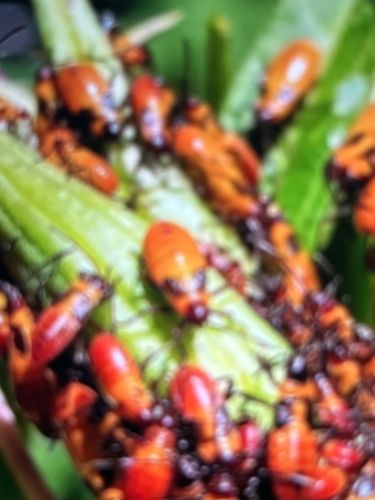Boxelder Bug
Scientific Name: Boisea trivittata
Order & Family: Hemiptera (True Bugs), Rhopalidae (Scentless Plant Bugs)
Size: Adults typically measure about 1/2 inch (12-14 mm) in length. Nymphs are smaller and more reddish-orange.

Natural Habitat
Found wherever boxelder, maple, or ash trees are present. They are commonly found in urban and suburban areas, parks, and woodlands. In the fall, they often congregate on houses and other structures seeking warmth and shelter for overwintering.
Diet & Feeding
Primarily feed on the sap of boxelder trees, particularly the seeds and female seed-bearing trees. They also feed on other maple and ash trees. They use their piercing-sucking mouthparts to extract fluids.
Behavior Patterns
Boxelder bugs are social insects and are often found aggregated in large numbers, especially during the fall when they seek protected overwintering sites. They often gather on the sunny side of buildings. Nymphs typically feed on boxelder seeds and leaves, as well as on maple and ash trees. Adults lay eggs on the leaves and bark of host trees in spring. They are mostly harmless but can be a nuisance when they invade homes.
Risks & Benefits
Potential risks: Primarily a nuisance pest, especially when they enter homes in large numbers. While they do not bite or transmit diseases, they can stain curtains, walls, and furniture with their fecal droppings. If crushed, they can emit an unpleasant odor. Potential benefits: Generally considered insignificant in terms of ecological benefits, though they can serve as a minor food source for some predators.
Identified on: 8/30/2025